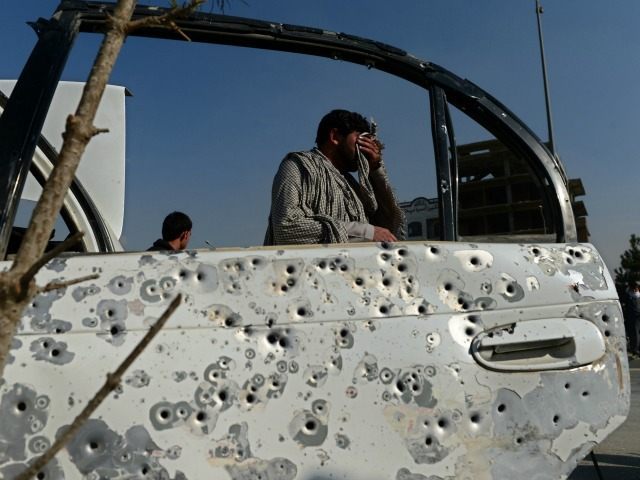The number of Afghan civilian fatalities and injuries hit 11,002 in 2015, marking the highest number of total civilian casualties since the United Nations Assistance Mission in Afghanistan (UNAMA) began tracking the data in 2009, officials have announced.
“In 2015, the conflict in Afghanistan continued to cause extreme harm to the civilian population, with the highest number of total civilian casualties recorded by UNAMA since 2009,” UNAMA reveals in its 2015 Annual Report on Protection of Civilians in Armed Conflict. “Following increases in 2013 and 2014, civilian deaths and injuries from conflict-related violence increased by four per cent compared with 2014.”
“Between 1 January and 31 December 2015, UNAMA documented 11,002 civilian casualties (3,545 civilian deaths and 7,457 injured), marking a four per cent decrease in civilian deaths and a nine per cent increase in civilians injured,” it continues. “Since UNAMA began systematically documenting civilian casualties on 1 January 2009 up to 31 December 2015, UNAMA recorded 58,736 civilian casualties (21,323 deaths and 37,413 injured).”
Violence in war-torn Afghanistan, primarily at the hands of the Taliban, increasingly devastated the most vulnerable, notes the annual report.
“In 2015, one in 10 civilian casualties was a woman and one in four was a child,” the UN Afghan mission reports. “While overall civilian casualties increased by four per cent in 2015, the mission documented a 37 per cent increase in women casualties (1,246 women casualties, comprising 333 deaths and 913 injured) and a 14 per cent increase in child casualties (2,829 comprising 733 deaths and 2,096 injured).”
“In 2015, the conflict caused extreme harm to the civilian population, with particularly appalling consequences for children. Unprecedented numbers of children were needlessly killed and injured last year… other children suffered the loss of parents, and increasingly their mothers, sisters, and female role models,” explained Danielle Bell, UNAMA Director of Human Rights, in a statement.
UNAMA attributes the record number of casualties in 2015 primarily to increased ground fighting between the Taliban and the U.S.-backed Afghan security forces in and around populated areas such as the provincial capital of Kunduz in addition to Taliban suicide attacks in major cities.
More than half (62 percent) of the casualties (2,315 deaths and 4,544 injuries) were perpetrated by anti-government elements, primarily the Taliban.
“The rise in overall civilian casualties in 2015 mainly stemmed from increases in complex and suicide attacks and targeted and deliberate killings by Anti-Government Elements, increasing civilian casualties caused by Pro-Government Forces during ground engagements and aerial operations, and rising numbers of civilians caught in crossfire between the parties to the conflict, most notably in Kunduz province,” notes UNAMA in its report.
In September 2015, the Taliban temporarily seized the city of Kunduz, the capital of the province of the same name, dealing a major blow to the U.S.-backed and trained Afghan security forces.
Kunduz, Afghanistan’s fifth largest city, was the first provincial capital seized by the Taliban since they lost power following the U.S.-led invasion in October 2001.
“Anti-Government Elements continued to cause the most harm – 62 percent [6,859] of all civilian casualties — despite a 10 per cent reduction from 2014 in the total civilian casualties resulting from their attacks,” explains UNAMA. “Notwithstanding the overall decrease, the report documents Anti-Government Elements increasing use of some tactics that deliberately or indiscriminately cause civilian harm, including targeted killings of civilians, complex and suicide attacks, as well as indiscriminate and illegal pressure-plate IEDs [Improvised Explosive Devices].”
Anti-Government Elements include the Taliban, the Islamic State (ISIS/ISIL) branch in Afghanistan known as the Khorasan Province (ISIL-K), and other armed groups. The Taliban was responsible for most (4,039) of the total 6,859 civilian casualties perpetrated by Anti-Government Elements.
At least 82 casualties (39 deaths and 43 injuries) were attributed to groups that pledged allegiance to ISIL-K.
There were 2,738 “civilian casualties attributed to anti-government armed groups for which there was no claim of responsibility and attribution to a specific armed group was not possible,” notes UNAMA.
“Civilian deaths [621] and injuries [1,233] caused by Pro-Government Forces caused 17 per cent of civilian casualties — 14 per cent from Afghan security forces, two per cent from international military forces, and one per cent from pro-Government armed groups,” reports the UN Afghan mission. “The report documents increased civilian casualties caused by Pro-Government Forces, including during ground engagements [1,116 deaths and 3,021 injuries], aerial operations [149 deaths and 147 injuries], and the activities of pro-Government armed groups.”
An estimated 493 civilian deaths and 1,392 injuries (17 percent of all casualties) that occurred during fighting between insurgents and the U.S.-backed Afghan security forces could not be attributed to one specific party.
Four percent of casualties were caused by unattributed explosive remnants of war and less than half of one percent were attributed to cross-border shelling from Pakistan into Afghanistan, notes UNAMA.
Groups linked to the Khorasan province mirrored media tactics used by ISIS in other countries, such as publicizing beheadings and execution by IED through social media, reports UNAMA.
The Khorasan Province primarily caused civilian casualties during battles against the Taliban for territory and influence
However, UNAMA “also documented civilian casualties from targeted and deliberate killings and IEDs attributed” to ISIL-K.
UNAM points out that Afghan security forces also suffered a record number of casualties in 2015 — more than 12,000.

COMMENTS
Please let us know if you're having issues with commenting.